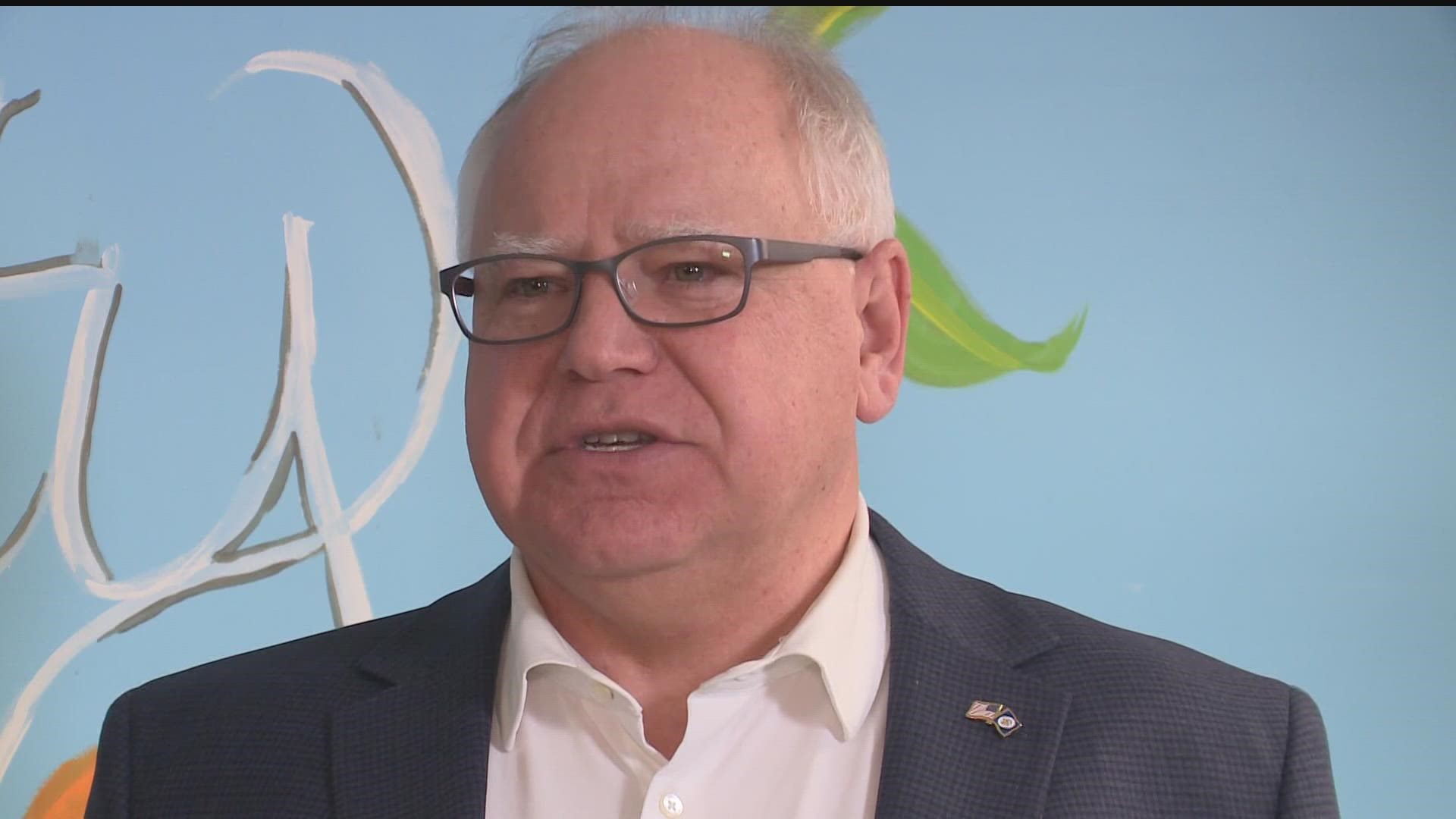ST PAUL, Minn. — Gov. Tim Walz visited a small café near the State Capitol Tuesday to make the case for a paid family and medical leave bill that will be moving through the legislature, which is now controlled by his fellow Democrats.
Owner C.J. Jome is an immigrant from Gambia who said he's struggling to make a profit, let alone afford medical leave benefits for himself or his employees. He said he'd welcome the chance to buy into a system that would let him be part of a larger statewide pool.
"Sometimes I cook all day to prepare the meals for the next day. I work two jobs outside this business to keep it afloat," Jome said.
He said he injured his back on one of his other jobs at a group home, but the short-term disability benefits he had access to wouldn't pay the bills. Walz said the proposed plan, which 11 other states now have, would be great for small business owners such as Jome.
"We want entrepreneurs like CJ to open new businesses and hire people. We want them to be successful," Walz told reporters. "We also want him, if he's in a car accident, to get the help he needs without jeopardizing all he's built here."
The system would work much like the state's existing unemployment insurance. The state would collect a payroll tax of 0.7%, which would go to toward a trust fund. Employers would have the option of passing half that tax off to employees. Self-employed people could also pay into the trust fund at the same rate employees would.
Once they've worked long enough to qualify for benefits, employees could take up to 12 weeks of paid family leave per year plus up to 12 weeks of medical leave. Companies that have comparable benefits could opt out.
"Whether it's a new baby in a family, a sick kiddo, a mental health struggle or a life-altering diagnosis, everyone deserves paid time away from work to heal and to grow," Lt. Gov. Peggy Flanagan remarked, recounting her pregnancy and the first months of her daughter Siohan's life.
Steve Grove, the commissioner of Minnesota Department of Employment and Economic Development, said three-fourths of Minnesota's workforce doesn't have access to benefits like these. He said a paid leave program would help attract more workers to the state, and help smaller businesses compete with large companies for the same people.
"This is going to help small employers attract and retain talent, right? Right now, they're competing against a bigger company that offers a blue chip program," Grove explained.
He acknowledged that temporarily replacing an employee who's on leave can create hardships for small employers. That's one of the reasons many statewide business groups are opposed to the idea, in addition to the extra burden of the 0.7% payroll tax.
Grove said one proposal worth considering would be a state grant program to help small businesses hire and train replacement workers.
The National Federation of Independent Business, which represents thousands of small business owners across the state, urged lawmakers to refrain from creating a new bureaucracy around paid leave.
"This massive new mandate on small business presents major problems at a time when many are struggling to recover from the pandemic and ensuing economic headwinds," John Reynolds, NFIB Minnesota State Director, wrote to the media.
"The $1 Billion tax will eat into small businesses’ shrinking bottom lines, 24 weeks of leave will exacerbate the worker shortage, and small employers face ruinous penalties for program violations."
The Minnesota Chamber of Commerce says that 80 percent of the state's companies already offer some type of leave that can be tailored to each company's needs. The Chamber is opposed to a state-run system that would add new paperwork and reporting requirements for private businesses.

